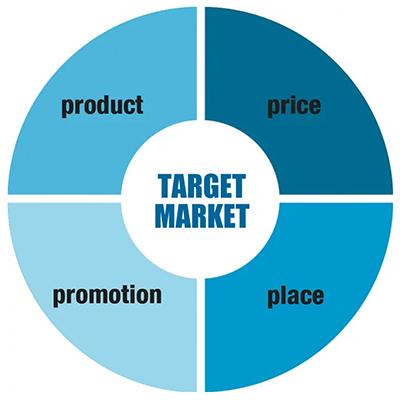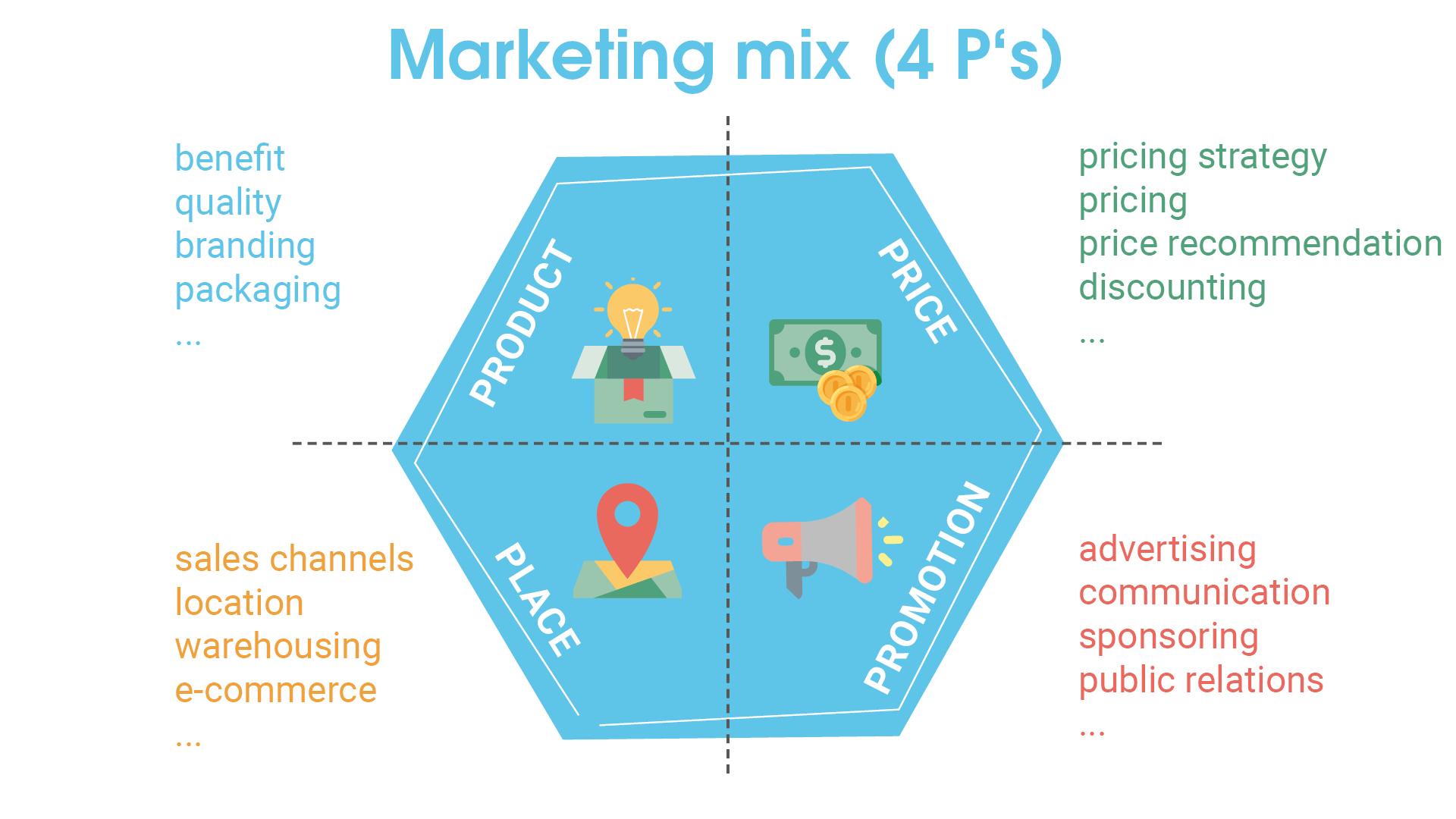Welcome too our latest blog post,where we dive deep into teh foundational elements of marketing: the Four Ps! Inspired by Professor Wolters’ engaging insights from his YouTube video “,” we’re about to embark on a journey that demystifies the core aspects of any successful marketing strategy. From understanding the intricacies of your product and its perceived value to mastering the art of pricing, place, and promotion, these Four Ps are the essential building blocks that can make or break your marketing efforts. Join us as we explore how each component interplays in crafting a compelling value proposition,and discover strategies to enhance your marketing effectiveness in today’s competitive landscape. Weather you are a budding marketer or a seasoned professional, this comprehensive guide will equip you with the knowledge needed to navigate the marketing mix with confidence and creativity. Let’s decode the Four Ps together!
Table of contents
- Understanding the Value Proposition of Your Product
- Strategies for Setting the Right Price
- Optimizing Place for Maximum Reach
- Crafting Effective Promotion Tactics
- Q&A
- The Conclusion
Understanding the Value Proposition of Your Product

is pivotal in shaping how your audience perceives it. A product is not merely a physical item; it encompasses services, ideas, and experiences that resonate with people’s desires. To enhance the value, consider the unique features and benefits your product offers. You could ask yourself: what distinguishes your product from competitors? It could be superior quality, exceptional service, or innovative design that makes a product desirable. Utilize this insight to connect emotionally with your target market, making them feel that your product not only meets their needs but exceeds their expectations.
Moreover, articulating your value proposition effectively is essential in influencing purchasing decisions. When potential customers perceive a clear benefit,they’re more inclined to choose your offering over others. To clearly convey this, focus on the core values and distinct advantages your product presents.A well-defined value proposition addresses the following aspects:
- Problem Solving: How does your product solve a problem?
- Emotional Connection: What feelings does your product evoke?
- Cost-Benefit Ratio: What value do customers get for their investment?
By highlighting these elements, you’ll create a compelling narrative that not only attracts customers but also fosters brand loyalty.
Strategies for Setting the Right Price

Determining the right price for your product or service involves a careful balance between value perception and market dynamics. Start by understanding your target audience and what value they associate with your offering. gather feedback through surveys, focus groups, and competitive analysis to discover what potential customers are willing to pay. This helps in establishing a sense of value-based pricing, where the price reflects the perceived worth of the product rather than simply the cost of production. Additionally, consider external factors such as competition and market demand, which can significantly influence your pricing strategy.
Employing psychological pricing strategies can also enhance consumer attraction. For instance, using prices that end in .99 can make customers feel they are getting a better deal, or employing discount offers such as buy one, get one free can stimulate higher sales. It’s essential to develop a tiered pricing model or a discount strategy that resonates well with your audience. Moreover, a dynamic pricing strategy, which adjusts prices based on changes in demand or market conditions, can optimize revenue. Below is a simple framework for different pricing strategies you can employ:
| Pricing Strategy | Description | Best for |
|---|---|---|
| Value-Based Pricing | Setting prices based on customer perceived value | Luxury goods |
| Psychological Pricing | Using prices like .99 to attract consumers | Consumer products |
| Dynamically Adjusted Pricing | Changing prices based on demand fluctuations | Travel, hospitality |
| Promotional Pricing | Temporary discounts to boost sales | New product launches |
Optimizing place for Maximum Reach

When it comes to maximizing reach, the concept of place extends beyond just a physical location. It’s about strategically positioning your product in the market to ensure it’s accessible to your target audience. Consider diverse channels through which your product can be available, whether that’s in physical stores, online marketplaces, or through direct sales.Each channel offers unique advantages, and marketers should assess which platforms align best with their desired customer base. For instance:
- Retail Partnerships: Collaborating with established retailers for broader visibility.
- Online Presence: Leveraging e-commerce platforms to reach a global audience.
- Pop-up Stores: Creating buzz and excitement in strategic locations.
optimizing place also requires keen attention to the distribution strategy. An effective approach can drastically improve product availability,ultimately influencing sales outcomes. Marketers should analyze the benefits of various distribution methods,including direct-to-consumer versus third-party logistics.Below is a simple comparison:
| Distribution Method | Advantages | Considerations |
|---|---|---|
| direct-to-Consumer | Higher margins, direct relationship with customers | Requires more effort in logistics |
| Third-Party logistics | Scalability, cost efficiency | Less control over customer experience |
Crafting Effective Promotion Tactics

To develop effective promotion tactics, it’s crucial to combine creativity with strategic thinking. Start by identifying your target audience and tailoring your messages to resonate with their needs and desires. Consider the different channels available for promoting your product, such as social media, email marketing, and customary advertising. Each channel has its strengths, and understanding how to leverage them can amplify your reach. As an example, using engaging visuals on platforms like Instagram can effectively capture attention, while informative content can thrive in blog posts or newsletters.
In addition to communication channels, your promotional tactics should include well-planned promotions, offers, and incentives. Consider the following effective tactics:
- Limited-time offers: Create urgency by offering discounts or exclusive deals.
- Referral programs: Encourage existing customers to recommend your product to friends.
- Social media contests: Engage users and generate buzz around your product.
By diversifying your promotional approaches and continuously analyzing their effectiveness, you can optimize your strategy and ensure that it aligns with your overall marketing goals.
Q&A
Q&A: Decoding the 4 Ps of Marketing Mix
Q1: What are the 4 Ps of the marketing mix?
A1: The 4 Ps of the marketing mix are product, Price, Place, and Promotion. These elements work together to help marketers meet the needs of their target audience and drive sales successfully.
Q2: How is a product defined in the context of the marketing mix?
A2: A product is more than just a physical item; it can also be a service or an idea that provides value to consumers. It’s anything that fulfills a need or desire, such as a delicious meal or a reliable car. Understanding and enhancing the value of a product is crucial for attracting customers.
Q3: Can you provide examples of how value can be created in a product?
A3: Absolutely! Value can be created through quality and features. For instance, a car with luxury features like leather seats and an advanced audio system offers more value than a basic model. Additionally, excellent service at a restaurant can make customers more willing to pay a premium compared to a place with poor service.
Q4: What role does price play in the marketing mix?
A4: Price is essential for capturing the value of a product.It reflects how much consumers are willing to pay and can influence purchasing decisions. Promotional pricing strategies, such as discounts or buy-one-get-one-free offers, can significantly drive sales and attract customers.
Q5: How should marketers approach setting the right price for their products?
A5: Marketers need to understand the perceived value consumers place on the product. This includes recognizing that value can vary between individuals; one person might feel a product is worth $10 while another might see it at $5. Finding a price that captures this perceived value is crucial for maximizing sales.
Q6: What is the importance of ‘place’ in the marketing mix?
A6: ‘Place’ refers to the distribution channels used to make the product available to consumers. It’s important because it encompasses the locations where a product is sold and how it is delivered to customers. Effective distribution ensures that products are available where and when consumers want them, ultimately driving sales.
Q7: How does promotion fit into the 4 Ps?
A7: Promotion involves the strategies and tools used to raise awareness and generate interest in a product. This includes advertising, public relations, social media, and sales promotions. An effective promotion plan communicates the product’s value and persuades customers to make a purchase.
Q8: what should marketers keep in mind regarding the 4 Ps?
A8: Marketers should view the 4 Ps as interconnected elements that contribute to the overall marketing strategy. Each ‘P’ should align with the others to create a cohesive approach that meets the needs of the target audience, captures value, and encourages customer engagement and loyalty.
The Conclusion
As we wrap up our exploration of the key components of the marketing mix, it’s clear that the 4 Ps—Product, Price, Place, and Promotion—serve as the foundational pillars of successful marketing strategies. Just as Professor Wolters laid out in his insightful discussion from gorgeous Vicenza, understanding these elements not only helps marketers create compelling offers but also ensures that they effectively meet their audience’s needs.
remember, a product is more than just a physical item; it’s the value and experience it delivers. Price is not merely a figure on a tag but a reflection of perceived worth. Place focuses on how and where products reach consumers, and promotion is the storytelling that connects it all. each P interacts dynamically within the marketing ecosystem, and mastering their synergy is crucial for achieving desired outcomes.
Now that you’re armed with insights from our video, consider how you can apply these principles in your own marketing efforts. Whether you’re refining an existing strategy or venturing into new territory, keep the 4 Ps at the forefront of your planning.We hope this blog entry inspires you to decode the marketing mix in your unique context and cultivate marketing strategies that not only resonate with your audience but also thrive in today’s competitive landscape.
Thank you for joining us on this journey through the marketing mix! if you have thoughts or experiences to share regarding the 4 Ps, we’d love to hear from you in the comments below. Until next time, happy marketing!



